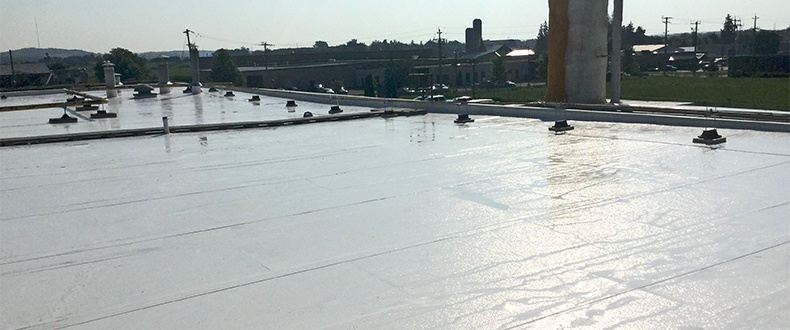Preparation is key with tropical storms

By Shawn Sulzener, FiberTite.
Avoid disaster with insurance, planning, knowing how to protect assets, and the right temporary roof.
Following one of the most destructive hurricane seasons in U.S. history in 2017, more businesses are recognizing the importance of preparation.
Hurricane season is a vital time to prepare your business for the inevitable tropical weather that will affect coastal areas — and as much as 100 miles inland — in the coming months.
For businesses, it’s especially important to be able to weather storms, and preparation is critical when it comes to getting back to business and avoiding costly downtime. A few simple steps can help protect both property and your company’s ability to return to normalcy as quickly as possible.
Start Now
It’s never too early to get ready to weather a storm. Start by ensuring you have the right insurance coverage to be able to bounce back from any weather-related issue. Commercial flood insurance will protect all assets under your roof — and remember that for most businesses, up to 80% of the value is not in the building but in the inventory and equipment. We share more about the importance of proper insurance below.
Additionally, it’s well worth the time to do a full risk assessment on your business. The Federal Emergency Management Agency (FEMA) has a good toolkit that covers elements of an assessment here. The basic elements include:
- Evaluating your systems and structure to determine how well your business could recover from a loss of utilities, equipment, inventory, etc.
- Evaluating your people to see how your staff, suppliers and customers might react to a damaging storm.
- Determining how your overall operations can handle a severe weather impact. This should include pre-storm preparation and post-storm recovery plans.
Building Your Plan
Developing a formal plan for your business will make any recovery a smoother and more effective process. Assign roles, set goals and build a plan that ensures business continuity as much as possible. This should include evacuation routes and shelter destinations to protect your company’s most important asset, its people. Be sure that it includes a communication plan for staff, customers and others to be used in the event of a storm so that everyone is kept up to date and your staff fully understands their respective roles.
Protecting Your Assets
One advantage hurricanes allow for is time. We typically know the risk they pose for days prior to landfall. Take advantage of that time to get your building and business ready.
- Protect windows with storm shutters or plywood
- Store anything that might be carried away by wind
- Move inventory and equipment out of harm’s way as much as possible (i.e. other facilities, highest points in the building)
- Build an emergency survival kit
- Ensure your roof’s drains and gutters are clear of debris and functioning properly
No matter what, be sure you have the right insurance coverage for any eventuality. Commercial flood insurance, business interruption insurance and other policies could be the difference between recovery and bankruptcy. Talk to your insurance agent to determine the best coverage for your needs.
It Starts at the Top
Without a sound roof, everything of value in your building is exposed and at risk of destruction, and that exposure could last longer than you imagine. Hurricane Irma pounded Florida in 2017 and almost a year later, roofs are still damaged simply because roofers cannot keep up with the work.
One lesson Irma imparted was that conventional temporary fixes are not adequate. Temporary roofing membranes are still hard at work in Florida, and many were only designed to last a few months. Look for more durable temporary solutions like FiberTite® Blue Roof™, which works like conventional material and can last more than a year.
This longevity is critical because insurance typically only pays for one temporary roof after damage occurs. Many businesses and homes affected by Irma have had to reseal or even replace their temporary membranes, adding hassle and expense to an already difficult situation.
If you have experienced water damage or want to be prepared for any challenge your roof may face, don’t wait for disaster to strike. Engage a high-quality roofing consultant today. RCI is a great place to find a professional.
To learn more about Blue Roof or general hurricane preparedness for your commercial roofing membrane, contact FiberTite.
For more information about FiberTite visit them here.
Editor’s note: This article was first published on FiberTite’s blog and can be viewed here.








-2.png)









Comments
Leave a Reply
Have an account? Login to leave a comment!
Sign In